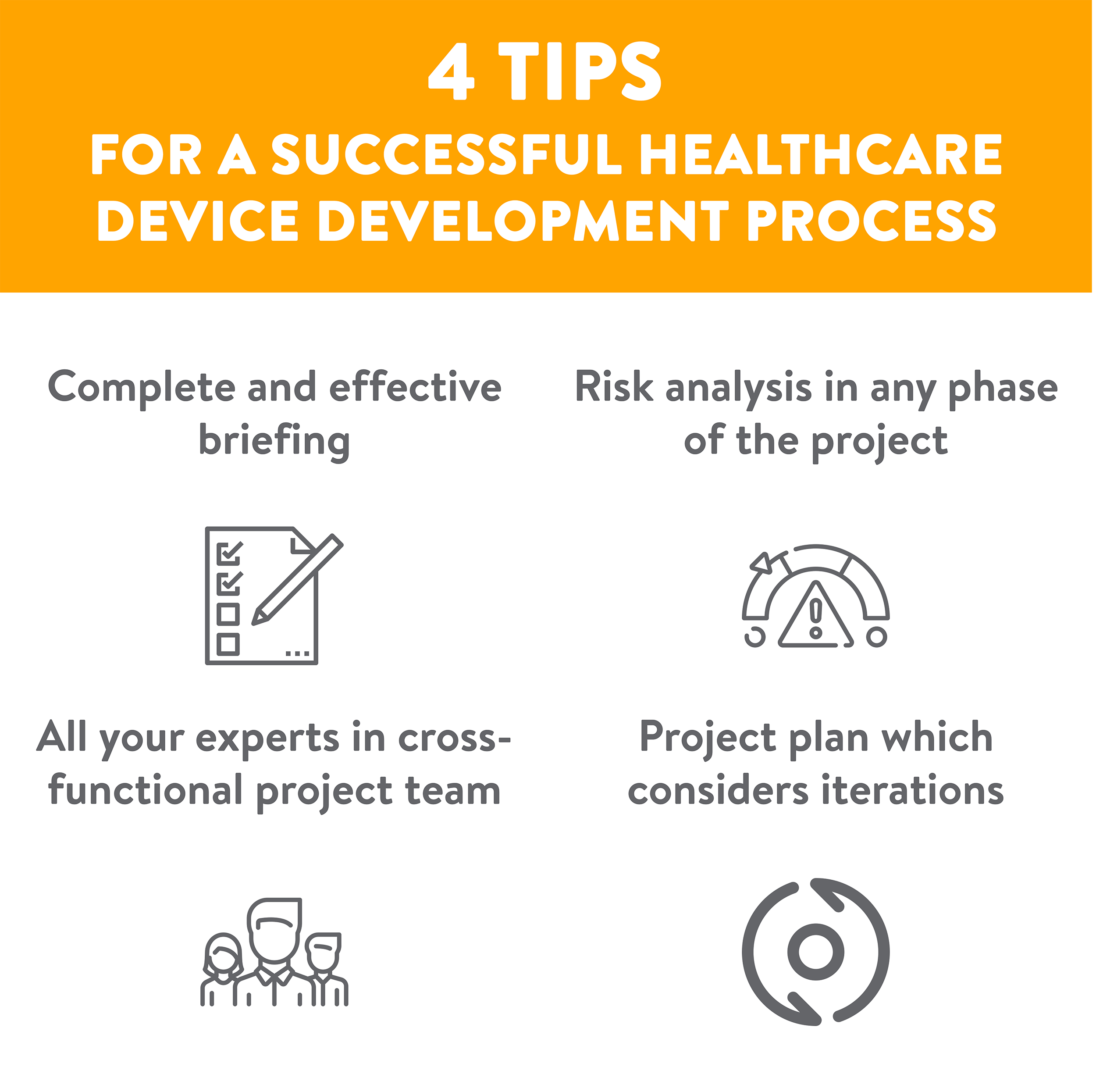Let’s assume you have new innovative idea and you are definitely committed to transform it into a real medical device and market your product on time. How can we create the appropriate starting situation to successfully achieve this goal?
16 Years Experience in Medical Device Development
After 16 years, we know there are many problems that may occur and it is impossible to predict them all. However we can be prepared and we have to do our utmost to successfully bring every ideas to market. Here a selection of the main lessons learnt and the relevant issues / experiences which brought us here.
1. Comprehensive Requirements List
Recommended Practices
Do complete checklist and 360° briefing forms
Make the technical checklist as detailed and precise as possible. Specify with exact numbers all the requirements and possible usage situations. Involve all the relevant departments in creating and checking the brief (even marketing might have an opinion).
Learning experiences
Few years ago we designed a medical device with trolley and a handle to move it around. When the project arrived to the final stages of pre-production, suddenly the client required the handle was strong enough to lift up all the trolley. Therefore, our engineers reviewed the 3d model to meet the request, but time could be saved if the technical briefing was precise.
2. Risk Analysis & GANTT
Recommended Practices
Make sure you have the experienced project manager and GANTT planning
Complete risk analysis in any phase of the project is needed and your project manager has always to foresee extra time in the project plan for unexpected problems.
Learning experiences
Some problems can’t be predicted, but it’s one of the tasks of a good project manager to foresee extra time for the unexpected. For example, the container ship with your molds or parts could break into 2 parts and sank in the Ocean.
That’s what happened to the ship with the molds of one of our projects. Thanks to our process, parts and molds were shipped separately and we had produced enough parts to cover 1 year of production and make new molds.
3. Cross-functional Team
Recommended Practices
Make sure you have all needed experts involved in the project team, which performs regular weekly checks.
Keep your experts well integrated into cross-functional project teams.
Learning experiences
Having a multi-functional team (designer, engineers, prototyping and production experts) allows us to overcome issues in the very early stage. For example, the skills of our engineers combined with the expertise in plastics of our production team resulted in a reduced size (20%) and weight (1 kg) for a defibrillator.
4. Planning According to the Iterative Process
Recommended Practices
Don’t plan to bring the product to market in the too early development stage
There are no certainties in the creative process – several loops of testing, re-designing, re-engineering, prototyping may be needed
Learning experiences
Many years ago, Creanova’s engineers faced their first wearable medical device project aimed to monitor vital signs. During development phase, the medical device was tested internally and it was ready to be shown to the client. During the client meeting, all of client’s representatives tested the device on themselves and it perfeclty worked. Then, came the turn of Creanova’s CEO and… for the device our CEO was a dead person.
Of course our team fixed it, but we learnt that in such a creative process in the development of a healthcare device from scratch, there might be the need to re-design, re-engineering re- test, re-do many times to arrive to the final solution.

